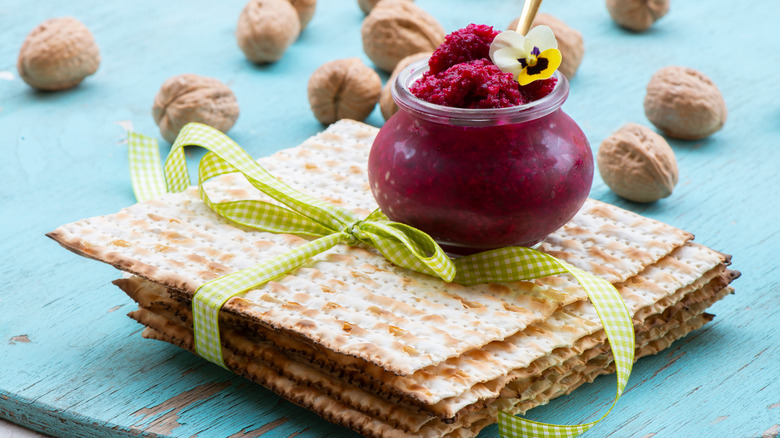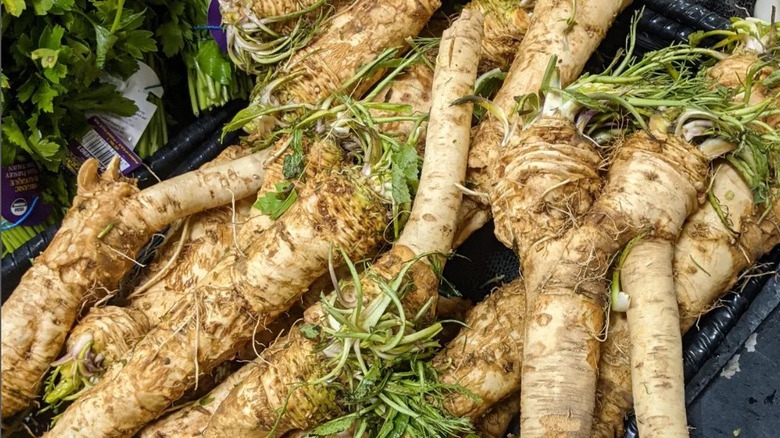The Significance Of Bitter Herbs On The Seder Plate
For observant Jews, Passover's principle dictate is not merely to recount the story of how the Jewish people were enslaved in Egypt and how they found freedom with their God's help, but to also place themselves right into the story, as if it were happening, now, in real-time. "In every generation one is obligated to view himself as though he came out of Egypt," Jewish law holds, according to Rabbi Gideon Weitzman (via Yeshiva). Of course, that is what the Seder (pronounced "SAY-duhr") is for.
"Seder" means "order" and is, essentially, driven by a set of very specific instructions on how to tell the exodus story for maximal emotional impact. These instructions run the gamut from how exactly to sit at the table, when to drink your wine, when it's time for a song or a prayer (or both), and which props will come in handy in really bringing the story home. Yes, there are props, and most of them are edible and meant to be eaten during the Seder to highlight some aspects of the story.
That's where the Seder Plate comes in, like a staging area for the story's edible props. These include matzo, a hard-cooked egg, a springtime vegetable, saltwater, charoset, a lamb shank, and bitter herbs, according to Rabbi Eliezer Malamed (per Yeshiva). Each is there for a specific purpose, but our focus, for now, is on the bitter herbs and their significance.
The bitter herbs are actually vegetables steeped in symbolism
There is an urban legend attached to the Seder Plate, which is said to contribute to its evolvement through the years, but one thing that hasn't changed is the commandment to eat maror (per Yeshiva). "Maror" is Hebrew for "bitter," according to My Jewish Learning. For the Seder Plate's maror, Jewish law requires a grayish-looking bitter-tasting vegetable to be used. For unknown reasons, the English translation of that came out as "bitter herbs," although it would be unusual to see actual herbs used for this purpose. Rather, many Seder tables use "chrain," which refers to the type of horseradish shown in the photo above. Other Seder tables may use any number of bitter-tasting salad greens (via The Spruce Eats).
As to what is behind the commandment to eat bitter herbs on Passover, one theory is that the bitter taste is meant to deliver a real-time metaphorical taste of the bitterness of slavery. That said, there are two times during the Seder when bitter herbs are to be eaten, and both times, the bitter herbs are eaten right along with the sweet fruit and nut relish known as charoset. Chasing the bitter herbs with the sweet charoset is intended as a reminder that the bitterness of slavery was relieved by the sweetness of freedom.

